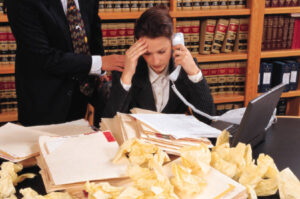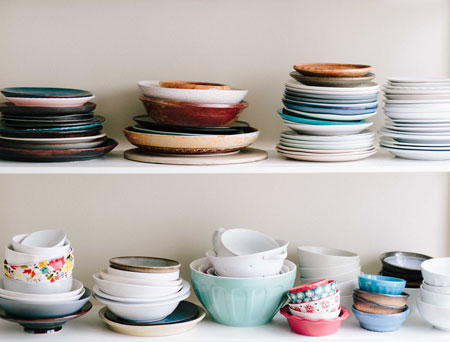Have you got Excuses for YOUR Disorganization?

Always needing excuses for your disorganization can be exhausting. Maybe this isn’t you, but perhaps someone you know. Are you chronically disorganized, overwhelmed and frustrated? Realizing that you are forever holding everyone else up. You know you cause deadlines to be missed and you shrug off offers to help. You work hard to ignore complaints from colleagues but then go home discouraged yet again. Some people suggested you work with a professional organizer . But this is just too scary. Chronic disorganization in an office is no laughing matter and no one knows it like you.
Whether your work is virtual or you are physically present in an office setting, being on time, on task and on target is key. Here are the most common excuses I’ve heard over the past 18 years and some solutions to help get beyond the chaos. My hope is there is a solution in here that speaks to your most common excuse so you can banish the overwhelm and exhaustion once and for all.
5 Most Common Excuses
1 “I don’t have time to worry about tidy piles of paper“.
Maybe it feels that way but meanwhile you don’t mind asking everyone else to wait while to try and find the report, letter or document that is now past due. In most business environments, and in the personal world, timing is important if not critical. So being on time is essential.
Solution
In today’s world, most documents are digital. As a result our clutter tends to be on our computers. Computers file either by number of by letter. They don’t know any other way. Try to keep projects together in a file with the project name. It will be easy to find that report when you need it.
2 “I don’t need to be more organized; I can find anything I want in my office“.
Except that it takes you half an hour to find a file while everyone else is left waiting. Can you REALLY find anything in less than 30 seconds? If not, you need to find a solution.
Solution
If it is digital, try filing by project as identified in #1 above. Another solution is to file by date. People think in different contexts. If you think by date, start each file name with the date you wrote it or the date it is due or the date of the event. If its paper and you need to see your paper out and about, try just labelling your piles. Some people are pilers, some are filers.
3 “I’m not disorganized, I just like to keep things in case I might need them, someday“.
Meanwhile you keep insisting you need twice as much filing space as everyone else, your office is a stack of boxes covered in dust, untouched in 5 years. Regular purging is an important part of being organized. try spending 15 minutes each day, at the beginning of the day while your mind is fresh, to purge and recycle or share unnecessary documents. Significant progress can be made in just 15 minutes and when done consistently every day for several weeks, magic can happen. Make it a habit and your world will transform. Literally.
Solution
4.”I am actually very organized. I know exactly where everything is“.
Have you noticed you are chronically late for meetings, supper dates, meeting the guys for pickup hockey? Do you find yourself rushing for completion of tasks at the last minute. You think you’re organized? Have you asked your friends and colleagues recently?
Solution
You may think you are organized but the reality is that your friends and colleagues may think differently. Ever noticed that the time they give you to be together is half an hour earlier than everyone else? Time can not be managed. However, we can manage ourselves. Try using a timer or time-specific playlist to keep yourself on task. Give yourself a false deadline – before the REAL deadline – and then play a game to see how close you can get to it. Reward yourself as you get closer and closer to the deadline you set.
5 “I have my own style of organization. No one else would understand it“.

Keep your small business organized with these 5 key strategies.
You are absolutely correct that everyone has their own organizing personality. However, if you didn’t show up for work tomorrow no one else would be able to find any of your relevant work and your contributions to the company may be dismissed as meaningless. Still, your friends are frustrated waiting for you and partner is tired of the clutter hanging around.
Solution
Check out my blog post on organizing personality and see if you can figure out what your unique personality is. Matching your organizing personality to specific strategies, tools and processes can make a world of difference. Your boss and your friends will thank you. When we work for someone else, the work they pay us to do generally belongs to that company: files, paper, reports etc. Show them how important you are by creating organizing systems, processes and strategies that support you and your contributions to the world.
The world needs your unique talents. Find an organizing system that works for you and show us what you can do. No more need for excuses for disorganization!

















